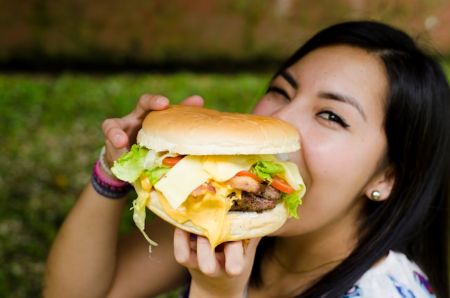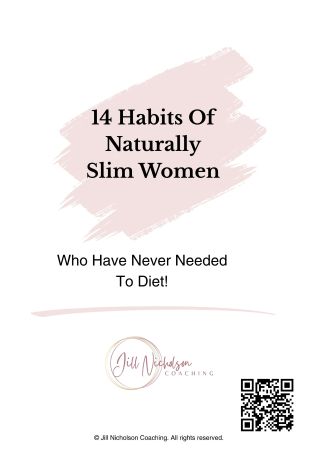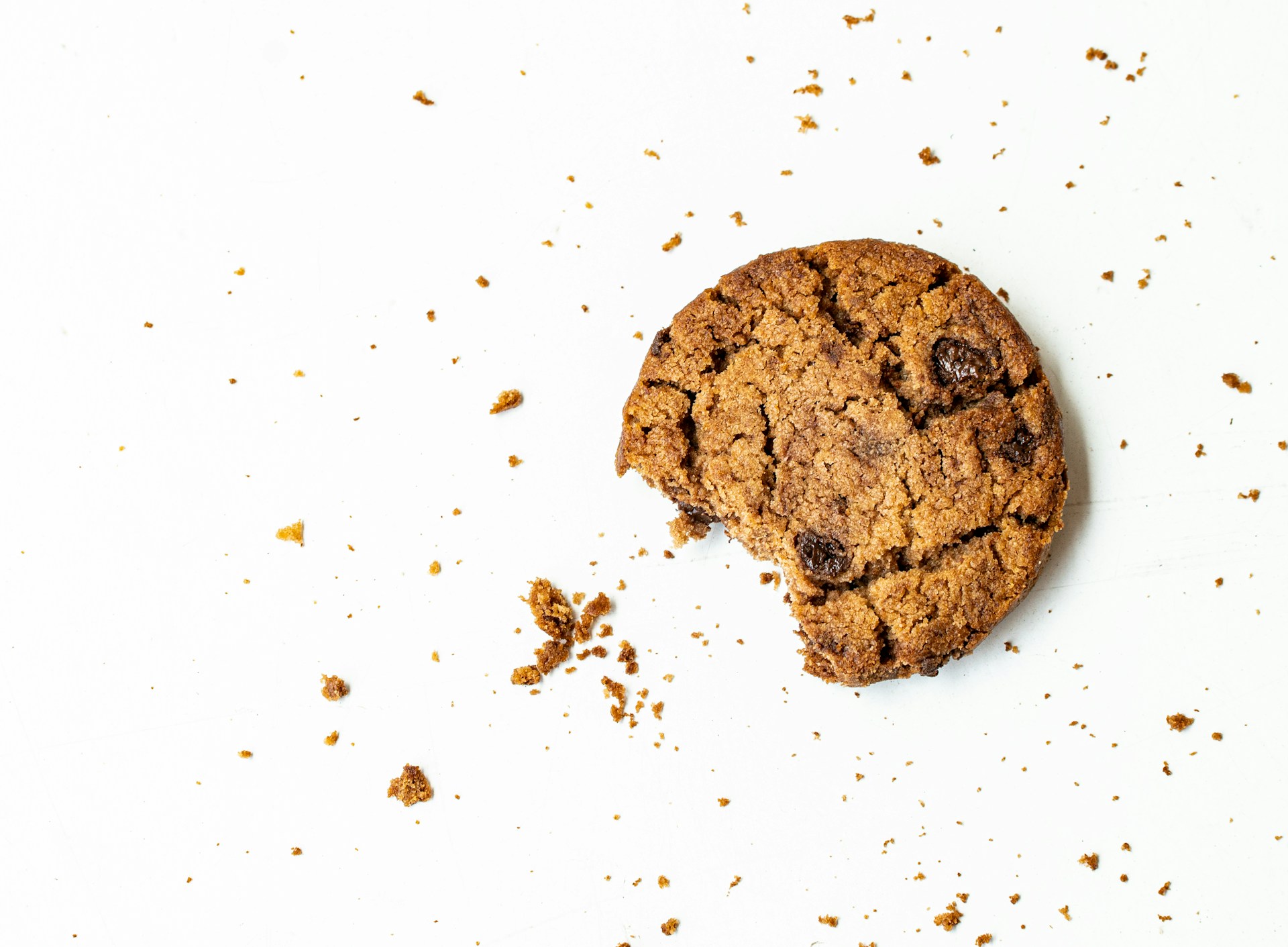Emotional Eating as a Symptom of Trauma, Dysregulation, and the Need for Safety
By two people who’ve been there—ex-emotional eaters who know the shame, the secrecy, and the search for comfort.
“It’s not about the biscuit—it’s about the backstory.”

Photo by Sabine Krafczyk
We’ve both been there. Sitting in the car, shopping bags in the back seat, quietly eating half a packet of biscuits before we even realise it’s happening. We’re not really tasting them—just feeling the tightness in our chest and that creeping wave of shame. And, like so many of our clients, we used to tell ourselves: “I’m weak… I have no willpower.”
But here’s what we wish someone had told us sooner: moments like this are rarely about willpower—or even food.
What Emotional Eating Really Is
We’re taught that emotional eating is about discipline and resisting temptation. That if we just tried harder, we wouldn’t do it. We know now—that’s a myth. Emotional eating is not a moral failing. It’s a signal. A coping strategy. Often, it’s the only thing that works in the moment.
At its simplest, it’s eating in response to feelings rather than physical hunger—loneliness, stress, anxiety, boredom, even celebration.
Quick Take: Emotional eating is the body’s way of saying, “I need comfort. I need safety.”
The real issue isn’t the eating—it’s the story we’ve been told about it. When the narrative is “bad habit” or “lack of self-control,” we miss the truth: sometimes food is the most accessible form of self-regulation we have. Emotional regulation refers to the processes that shape which emotions you feel, when you feel them, and how you experience them.
What Does Emotional Eating Look Like?
If you’re wondering whether this is something you’ve experienced, here are some common signs we see in ourselves and our clients:
- Eating when you don’t feel physically hungry, or when you’re already moderately full.
- Experiencing an intense craving for a specific food (often something sweet, salty, or carb-heavy).
- Not feeling satisfied after eating a generous amount of “healthy” food—because it wasn’t what your body truly wanted.
- Anxiously gathering more food while your mouth is still full.
- Feeling emotionally relieved while eating—as if a pressure valve has been released.
- Eating ahead of, during, or after a stressful experience.
- Using food to numb feelings you don’t want to face.
- Eating alone or in secret so others don’t notice.
- Hiding wrappers or packaging—or replacing snacks you’ve secretly eaten so no one realises. (Confession: Jill once replaced an entire packet of biscuits she’d eaten in secret with an identical new packet, just so nobody would know…)

Photo by Hybrid Storytellers
If you recognise yourself in any of these, you’re not broken—you’re human. And you’re not alone. In fact, it’s very likely that what you’re experiencing is emotional hunger rather than physical hunger.
In her book, ‘End Emotional Eating. Dr Jennifer l. Taitz says,
“We may fill our bellies with a lot of food and very little awareness or with a lot of awareness and enough food.”
The Trauma Connection
“Emotional eating isn’t indulgence—it’s survival.”
Trauma—whether from one life-shattering moment or years of chronic stress—reshapes the brain and body. It can lock us into fight, flight, freeze, or fawn, making it harder to feel safe or regulate emotions.
Our clients often come to us with gaps—missing pieces in their sense of safety that were created in childhood. Their stories are varied: some grew up with abuse or neglect, others went through the pain of parental divorce, the death of a grandparent, or being bullied Many have experienced loss in some form—often the loss of their “safe person” or a sudden shift in their whole little world.
If there’s one thread running through their stories, it’s this: safety was lost. And when that deep, internal sense of safety isn’t there, we naturally search for other ways to soothe and steady ourselves. For many of us, food became that refuge—because it worked.
Nervous System Dysregulation
Our nervous systems work best inside a “window of tolerance”—the space where we can think clearly, feel emotions without overwhelm, and respond to stress with flexibility. Trauma narrows that window, trapping us in cycles of hyper-arousal (anxiety, agitation) or hypo-arousal (numbness, shutdown, or eating on ‘auto-pilot’ in a trance-like state).
Quick Take: Sugar, refined carbs, and fats can act like an emotional “reset button.” That’s not weakness—it’s biology.
When our bodies feel unsafe, they reach for the fastest, most reliable way back to equilibrium. For some, that’s emotional eating.
For many emotional eaters, the pull toward the kitchen comes from a deep desire to move from feeling emotionally unsettled to feeling balanced, from dysregulated to regulated. We go searching for something—anything—to ease the discomfort. It is simply an attempt to change how we’re feeling.
We open cupboards or peer into the fridge because, in the past, food was the most effective tool we had to calm the inner storm. That searching can feel urgent, even intense.
And here’s the heart of our philosophy: recognising clearly and without judgment that, in those moments, we were doing the best we could with the resources and emotional capacity we had at the time.

Photo by cottonbro studio
The Need for Safety
“Your body will always choose safety over willpower.”
Without a felt sense of safety, we can’t truly relax, digest, or restore. And if safe people, safe places, or calming tools aren’t available, food can become that “safe space” or “comfort blanket.”
The cruel twist is that shame about eating often drives us deeper into the cycle. We criticise ourselves, and in that pain, we turn back to the very behaviour we wish we could escape. Seen through a trauma-informed lens, this isn’t failure—it’s protection.
The Outer Casing of Shame: Why It Gets Even Harder to Stop
Let’s talk about the after. After the biscuits are gone. After the moment has passed. After the tiny flicker of comfort is replaced by the heavy thud of shame.
This is where many of our clients live. Not just in the moment of emotional eating—but in the fallout. The cycle of self-talk that kicks in almost instantly:
“I’ve messed up again.”
“I was doing so well.”
“I’ll start over tomorrow.”
“I can’t be trusted.”
That voice isn’t just critical—it’s protective. It’s trying to explain the moment, contain it, make sense of it. But what it often does instead is cement it. That inner script becomes an outer casing that wraps around the original need, making it harder to access the truth underneath. Harder to soothe the wound at the root.
Because here’s the deeper layer: the shame response is often more intense than the behaviour itself. It becomes an energetic lock. A somatic freeze. A layer of self-blame and secrecy that stops us from reaching out for support. And every time we repeat the cycle, that outer casing thickens. It becomes part of our identity: “This is just who I am.”
But it’s not who you are. It’s what you did, in a moment when your system didn’t have any other option.
Energy, Safety, and the Hidden Frequency of Food
Everything we do, every pattern we repeat, holds an energetic frequency. Emotional eating often vibrates at the frequency of unmet needs—needs for connection, grounding, nourishment, even boundaries.
From an energetic point of view, each time we turn to food for safety, we are unconsciously trying to regulate not just our nervous system, but our field.
We’re trying to change our vibration. To shift the dense, jagged, uncomfortable frequency of fear, loneliness, abandonment, or grief into something softer, sweeter, more bearable.
Food becomes a frequency shifter.
And in the absence of tools to move energy safely—through tapping, movement, breath, sound, or connection—eating can feel like the only viable option. The trouble is, if the original frequency hasn’t truly shifted, we’re just temporarily numbing it… and when it returns, it often brings shame and judgment with it. A heavier frequency still.
Why the Body is Not the Problem—It’s the Messenger
So many of us carry the belief that the problem is our body: its shape, its appetite, its inability to “behave.” But your body isn’t misbehaving—it’s messaging. Loudly. Repeatedly. Compassionately.

Photo by Andres Ayrton
It’s saying: “I don’t feel safe.”
It’s saying: “I need support, not shame.”
It’s saying: “I’m carrying too much.”
When we ignore or silence those messages, the body has to shout louder. The cues become cravings. The gentle tug becomes a binge. Not because we’re weak, but because the system is trying so hard to return to equilibrium without the tools to do so.
This is why emotional eating is never just about the food. It’s about the inner world we’ve never been taught to read… the energetic static we’ve never learned to clear… and the nervous system cues we’ve been told to override.
What Starts to Shift When We Meet the Pattern with Safety Instead of Shame
Here’s what we’ve learned, both personally and professionally:
When safety increases, the compulsions decrease.
When shame is replaced with curiosity, the cycle begins to soften.
When we learn to be with our discomfort, instead of desperately trying to escape it—we finally give ourselves real options.
This is where healing begins.
Not with another food plan.
Not with tighter control.
But with the soft, steady rebuilding of inner safety.
Through tools like tapping, somatic tracking, nervous system regulation, and compassionate inquiry…we begin to unravel the casing, layer by layer.
We learn to feel again.
To listen again.
To choose again.
And eventually, we realise:
We never needed to “fix” ourselves.
We only needed to find the right doorway back to truth.

Photo by Luísa Schetinger
Moving Toward Healing
Quick Take: Healing emotional eating isn’t about eating less—it’s about living more.
- Start by identifying the emotion you’re feeling—without judgement. Pause and name it. When we label what’s happening inside (“I’m anxious,” “I’m lonely,” “I’m overwhelmed”), we gain the information we need to respond in a way that truly helps.
- Ditch the diet dogma. Restriction fuels shame and cravings. Food is not good or bad—it’s nourishment, comfort, and connection.
- Work with your body, not against it. Gentle movement, breath work, EFT tapping, and co-regulation with safe people can help your nervous system expand its tolerance.
- Build safety beyond food. Therapy, supportive relationships, and self-compassion help create environments where your body can rest without always needing food as the lifeline.
Healing isn’t about swapping biscuits for carrot sticks. It’s about swapping disconnection for connection.
A New Story About Emotional Eating
It’s not ‘What’s wrong with me?’—it’s ‘What’s going on inside that needs my care?

Emotional eating is your body’s way of saying:
I need safety. I need soothing. I need something I’m not getting.
Next time you find yourself eating for reasons beyond physical hunger, try asking:
- What is missing that I can find a new way to comfort?
- What do I need right now?
- What feeling am I trying to medicate with food?
- What does physical hunger feel like to me—in my body? (For example: a hollow sensation in my stomach, feeling a bit shaky or cold.) If you are not feeling these physical signs it is emotional hunger.
When we trade judgement for curiosity, food loses its power over us. And that’s when real healing begins—not just with eating, but with ourselves.
Have a peek at Jill’s free resource, The 14 Habits of Naturally Slim Women
Main – Photo by Vyshnavi Bisani on Unsplash





